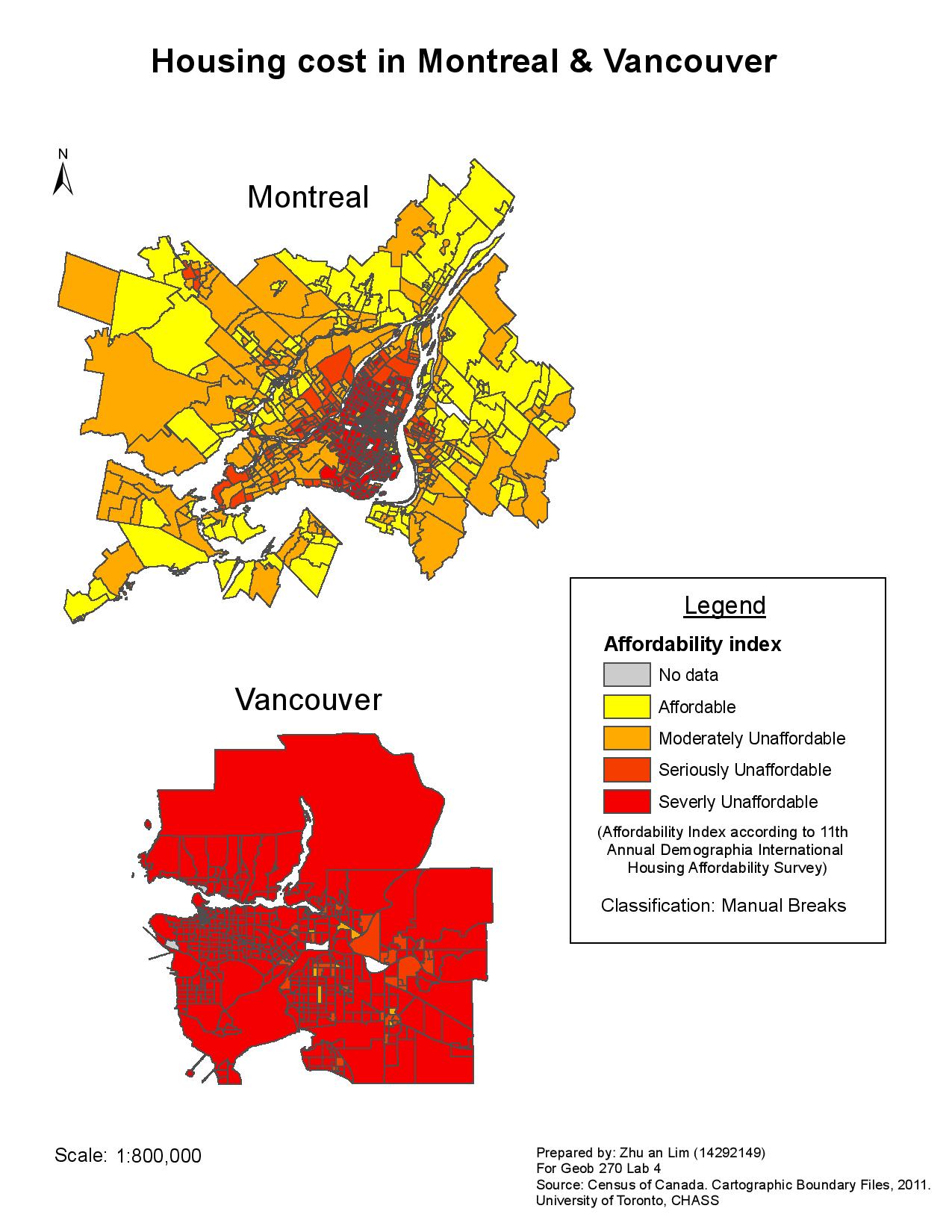Housing affordability: A good indicator?
Affordability of housing compares the actual housing cost to the income of individual household as a ratio, which is a much better representation of the actual affordability of housing in a region. This is because the difference in individual income in different regions might affect the ability of individuals to afford the cost of local housing. For example, a city with low housing costs and low average household income might be considered less affordable than a city with low housing costs but high average household income. This is why affordability of housing is often related to both attributes of housing costs and household income. (Fig 1)
According to the 11th Annual Demographia International Housing Affordability Survey (2015), different ratings for metropolitan markets have been determined based on a affordability index, introduced by Dr. Shlomo Angel from Stern School of Business, New York University. The index classify the affordability of housing into four different classes, namely: Severely Unaffordable, Seriously Unaffordable, Moderately Unaffordable, and Affordable. The Demographia International Housing Affordability Survey rates housing affordability using the “Median Multiple”, which is used for evaluating urban markets. We have to consider the accuracy or ethics behind the results from these survey, as they will determine whether or not the index is a good representation of the affordability of housing in different metropolitan cities.
Assuming the affordability index as a sole indicator of a city’s ‘livability’ is not an accurate representation, as there are many other factors that may affect the livability of a city. For example, the presence of good infrastructure such as social housing, public transportation, and clean water are all determinants of the livability of a city. Therefore, we have to take into consideration other potential factors as well, in order to have a better estimate of the actual livability of a city.

